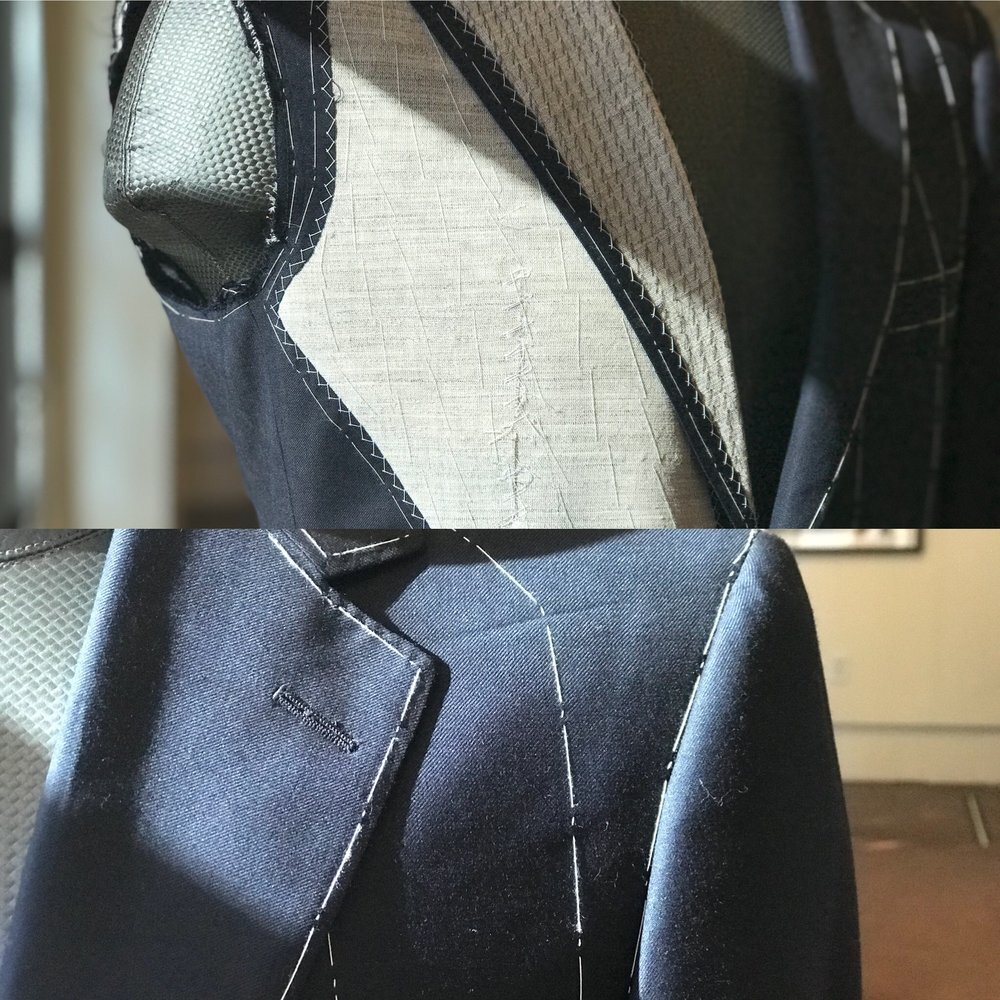Recognizing the Tailoring Process: From Material Choice to Last Suitable for the Perfect Wardrobe
The tailoring procedure is a complicated interaction of art and scientific research, beginning with the important decision of textile choice and culminating in the accurate changes of final fittings. Each material type brings one-of-a-kind high qualities that influence not only the visual charm but additionally the garment's long life and viability for different occasions.
Relevance of Textile Choice
Choosing the appropriate textile is vital in the tailoring process, as it straight influences the comfort, longevity, and overall visual of the final garment. The choice of fabric sets the foundation for the garment's performance, functionality, and style. Various materials have distinct properties, such as breathability, stretch, and weight, which can significantly impact exactly how the garment drapes and fits the body.

A customized item made from an appropriate textile not only showcases workmanship but also boosts the wearer's confidence. Subsequently, recognizing the subtleties of textile option is paramount for any type of customizing venture. It guarantees that the end product not just meets the aesthetic needs of the customer but likewise lines up with practical needs, thus attaining an unified balance between kind and feature in the customized wardrobe.
Kinds Of Fabrics and Their Usages
Understanding the various types of fabrics readily available is essential for making educated decisions throughout the tailoring procedure. Each textile has one-of-a-kind characteristics that determine its viability for particular garments and occasions.
Its flexibility allows it to be customized right into everything from tee shirts to gowns. Its all-natural elasticity helps garments keep form over time.
Silk exudes high-end and is light-weight, making it best for eveningwear and delicate blouses; nonetheless, it requires cautious handling due to its frailty. Linen, with its distinctive surface, is a preferred choice for cozy environments, providing a crisp and ventilated feeling, but it wrinkles conveniently, which might affect the garment's appearance.
Synthetic fabrics, such as polyester and nylon, deal sturdiness and resistance to creases, making them appropriate for daily wear and energetic garments. Recognizing these textile kinds and their properties permits far better decision-making, making sure that each customized item not just fits well but additionally lines up with the designated function and occasion.
The Tailoring Methods Clarified
The art of tailoring relies upon a selection of techniques that change fabric into well-fitted garments. Central to this procedure is pattern composing, where a tailor develops templates based upon the customer's dimensions and desired style. This first step ensures that the garment will fit the user properly prior to any type of cutting occurs.
As soon as patterns are developed, reducing techniques enter into play. Precision is paramount as errors can lead to misfitting garments. Tailors frequently utilize different reducing approaches, such as single-layer cutting for intricate layouts and multiple-layer cutting for effectiveness on basic patterns.
Basting is another vital strategy, enabling dressmakers to momentarily stitch fabric assemble for a preliminary installation (wedding suits perth). This approach uses the possibility to analyze the drape and overall shape before final sewing
Seaming strategies, including flat-felled seams and French seams, improve the garment's resilience and visual allure. Tailors additionally use strategies such as interfacing and cushioning to supply structure and shape to particular areas, like collars and shoulders.
Finally, completing strategies, consisting of hemming and side completing, make certain the garment's longevity while offering a refined appearance. Together, these strategies create the backbone of reliable tailoring, leading to beautiful, custom-fit clothing.

Fitting Adjustments and Factors To Consider
After the initial tailoring techniques have been applied and the garment is constructed, fitting changes end up being vital to attaining the best fit. These modifications deal with various elements of the garment, guaranteeing it contours to the wearer's body form and enhances overall look.

The rise of trousers is another critical element; it ought to rest conveniently Related Site above the hips without creating discomfort, allowing for simplicity of movement. Hemming sizes for both pants and skirts should mirror the wearer's preferred design while respecting percentages.
Moreover, focus must be provided to the rear of the garment, making sure that there are no unattractive pulls or excess textile - custom suits perth. Each change needs to be meticulously taken into consideration, as even small alterations can substantially influence the general fit and visual of the customized piece, eventually causing a wardrobe that exhibits confidence and class
Preserving Your Tailored Apparel
Constantly follow the care label instructions, which might suggest dry cleaning for fragile materials or maker cleaning for more long lasting products. Avoid regular laundering, as this can use down the material and modify the garment's form.
Storage space is just as crucial; use padded wall mounts for coats and layers to maintain shoulder framework, and store trousers folded up nicely or her explanation hung to protect against creasing. Secure garments from straight sunshine, which can discolor shades and damage fibers.
Additionally, routine evaluations for small fixings can stop bigger problems. Look for loosened buttons, tearing joints, or indications of moth damages, addressing these problems promptly to preserve the garment's integrity.
Lastly, think about seasonal rotation. Wearing customized pieces in moderation enables textiles to recoup, expanding their life expectancy. By carrying out these upkeep techniques, you can about his make certain that your tailored garments continue to be as immaculate as the day you first used them, boosting your excellent closet for years to find.
Final Thought
The customizing process, encompassing fabric selection, experienced methods, and accurate fitting modifications, plays an essential duty in developing garments that improve both comfort and style. Recognizing the value of maintenance prolongs the life of tailored garments, solidifying their value in a well-curated wardrobe.